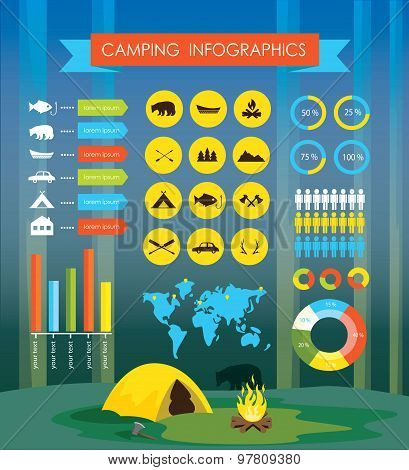A double-wall design that's both breathable and water-proof. They can be a lot more comfortable than single-wall tents in winter yet can be much less spacious and open sights much less.
Created to endure high winds and lost snow. They may additionally have thicker poles and added guylines to boost rigidness.
Whether you're glamping or backpacking, these tents can take care of a variety of wintertime conditions. They're suitable for those seeking a cozy and warm hideaway in the backcountry.
1. Weatherproofing
Lots of camping tents include waterproofing that's enhanced by polyurethane layers and resilient water repellent (DWR) treatments. Ultimately, however, modifications in temperature and extended direct exposure to sunlight can degrade the camping tent's safety coverings. Revitalizing these with seam sealant or a DWR therapy can assist shield your tent from wetness damages and extend its beneficial life.
When packing up your camping tent, put in the time to carefully fold up and fit each shockcorded post section into location. This will protect against undue anxiety that can damage or chip the pole sections and bring about structural issues when you established camp.
Similarly, use the Disappear principle when choosing camping areas. Pick spots that are without rocks, pine cones and various other particles that can puncture or abrade the outdoor tents floor and fly. Additionally consider bringing an impact, which is a custom-cut ground cloth designed specifically for your camping tent's layout and will safeguard it from dirt, grit, stones and various other sharp objects.
2. Ventilation
If you are camping in the Everglades' humidity or Death Valley's warmth, you need a camping tent with excellent ventilation. Ventilation is a crucial factor in preserving convenience and eliminating mold and mildew that can make your outdoor tents unusable.
The air flow system of a four-season tent is developed to get rid of cozy, moist air and change it with cooler, drier air. This air exchange minimizes condensation by getting rid of moisture from the air before it can decide on the walls and ceiling of your camping tent.
To ensure your camping tent has appropriate air flow, search for breathable products and flexible vents. Additionally, boost your tent somewhat off the ground to enhance air flow. One more key element of a good air flow system is making use of a stove jack, which gives a safe departure point for your outdoor tents's smoke pipe to avoid carbon monoxide poisoning.
3. Livability
While a 4 period tent might not be the very best choice for ultra-light backpackers, it is essential for those planning to camp year-round. Investing in this type of shelter saves money on separate arrangements and lowers equipment turn over. It additionally enables you to explore landscapes at various times of year, opening up peaceful off-season experiences and gorgeous winter surface.
If you pick a strong and roomy four period outdoor tents like the KUIU Tornado Star 2 or the Samaya 2.0, make sure camping tent that it supplies ample weather defense. This consists of a hardy framework, solid posts and textiles developed to withstand high winds and lost snow. Look for joints that are double-stitched and coatings like water repellent, mold and mildew & UV resistance layers that secure your investment from the aspects.
Furthermore, choose a double-wall layout for the very best livingability. Single-wall versions can be water-proof however have concerns with condensation. They can also be as well hot for summertime and not well matched to rain.
4. Storage space
Storing your camping tent in a shaded location shields it from the rough UV rays of sunshine. Prolonged exposure to these rays can deteriorate and damage the fabric over time, making the camping tent much less long lasting. It's additionally vital to frequently inspect the kept outdoor tents for indicators of moisture and intrusive pests.
Storage space camping tents are commonly more convenient to use than permanent structures since they don't need any kind of changes to your residential or commercial property. They additionally offer the versatility of relocating them around your outside room to address various storage space needs.
4-season camping tents are made to withstand rough weather. They normally include rigid structures to remain secure in high winds and thicker walls to supply warmth against snow and tornado winds. They strike an equilibrium between vital attributes like weather security, weight, and indoor room to fit your specific adventure objectives. The NEMO Kunai 2 and Hilleberg Nammatj 2 are both examples of 4-season tents that balance weather condition defense, weight, and livability.
